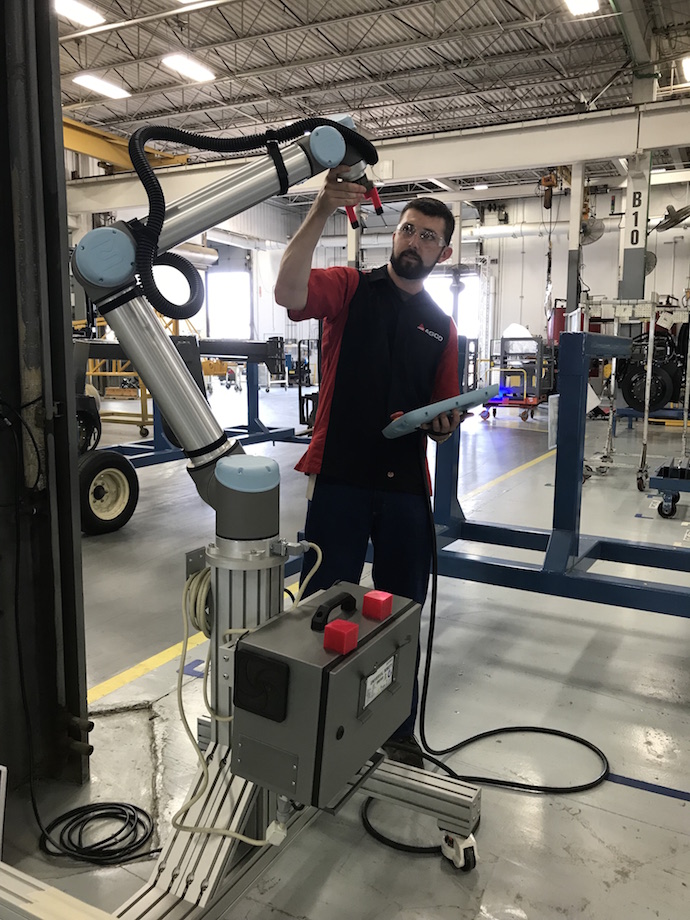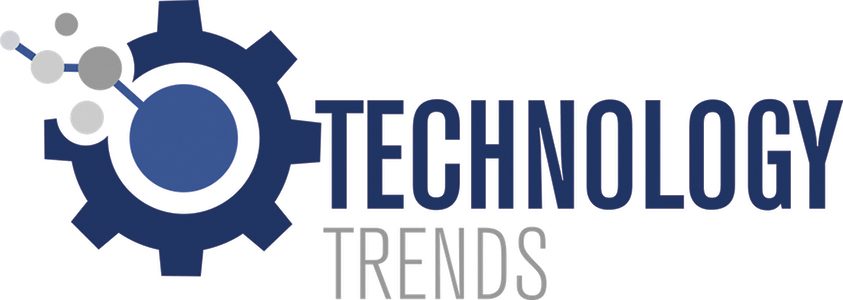Rural Lifestyle Dealer is reaching out to product development experts to learn about the technology they consider most important for the rural equipment market. This installment in the Tractor Technology series highlights a conversation with Rex Edmunds, strategic marketing manager for Massey Ferguson.
Rural Lifestyle Dealer: What’s been happening with Massey Ferguson in the last couple of years in terms of tractor advancements and introductions?

Rex Edmunds is strategic marketing manager for Massey Ferguson.
Rex Edmunds: Massey Ferguson has had an excellent performance in the less than 100 horsepower tractor category in the last 2-3 years. Before I get into what has been driving the resurgence of the iconic Massey Ferguson brand in the small tractor market, I want to mention a new product that will be driving growth in the coming months. The new 1700M compact tractor series, which is just showing up on dealer lots as we speak, features new engines with no DPF filter, making the 1700M the only premium compact on the market with maintenance-free engines. In addition, the 1700M also offers a new level of comfort with a deluxe cab option, featuring air seat, 4 LED worklights, and a factory sound system.
Looking back on the past 2-3 years, I don't know that we can attribute that success to what I would call high-tech features, such as those you find in precision farming or on large row-crop tractors. That's not something that's a huge purchase driver for compact utility tractors. What we have done is use technology to better deliver the core of customer value — the right spec for the right price. The best example of this is the Massey Ferguson 4700, 5700, and 6700 Series (70–130 horsepower) Global Series tractors, which were released in late 2016 and early 2017.
The Global Series offers three different chassis sizes, but the rest of the components in the line is the same, giving us the leverage of a common platform across the entire range. The Global Series doesn’t have any revolutionary features that haven’t been on tractors before. However, the 4700 Series offers a unique value proposition by offering radial tires, power shuttle transmission, and a spacious cab on a larger, heavier frame than any other tractor in its price range.

Massey Ferguson’s 1700M series is the company’s premium compact tractor line. It ranges from 36.2-59 gross engine horsepower and offers 3- and 4-cylinder diesel engines; mechanical or hydrostatic transmissions; and ROPS or cab versions.
This is indicative of the growth in the small tractor market in recent years. It is not coming from traditional premium tractors and basic spec tractors, but those that offer unique value, or spec-level, at a solid price. The company that wins is the one that uses their technology to drive cost to a point where they can deliver that unique value at an excellent price point. (See the sidebar, “Robotics on the Manufacturing Floor.”)
RLD: Can you explain more about the Global Series and how it fits in with Massey’s other series?
Edmunds: The Global Series was a clean sheet design, which is interesting because this kind of development is usually done for premium tractors. That utility size tractor, 70-130 horsepower, is widely sold throughout the world. The idea was to build a tractor that not only sells well in North America, but also Africa, South America, Europe, Russia — all over the world.
In North America, the Global Series has been an excellent addition to the Massey Ferguson portfolio. As I mentioned earlier, the 70-100 horsepower 4700 Series offers premium weight and stability with a solid feature set at a mid-spec price point. One trend that I've noticed is that the 70-100 horsepower tractors have gotten smaller over time. The engines are rated at a higher RPM, but they're smaller. The 4700 Series is heavier and has larger tires, so it can pull heavier implements.
Since the feature level is very similar across the entire Global Series, the 5700 & 6700 Series (100–130 horsepower) actually filled a gap in our product portfolio, by giving us a value-spec offering on a mid-range chassis.
RLD: What else are you offering the rural lifestyle segment in your compact and utility tractor lines?
Edmunds: The market for under 100 horsepower tractors is very diverse in terms of the customer type and application type — and what they value and what they’ll pay for. There are customers who don’t generate any revenue from their tractors and a significant portion making a living from then. Another segment is in between, such as part-time or retired farmers that still make some income from ag. Then, there are municipalities and landscape contractors as well as larger ag operations (row crop, dairy, livestock and specialty crops) using tractors in the under 100 horsepower range. And, every one of those segments has a different value point and different purchase driver.

AGCO employee Brady Enstad is training a cobot to assist in the wheel leg assembly area in the Jackson, Minn., manufacturing facility.
Over the past 3 years, the Massey Ferguson small tractor portfolio has evolved and grown to cover the needs of this broad range of customers as well as any manufacturer in the industry. We offer tractors at a variety of spec and price levels throughout the entire 20-130 HP range, including several specialty configurations.
RLD: Do you see any technology coming from outside the ag industry?
Edmunds: I pay attention to automotive manufacturers, not necessarily for the new “whiz- bang” features, but how are they driving value for a middle-of-the-road type car. If you look at how the typical sedan has evolved over the last 15 years, you would have to buy a luxury car to get some of these customer interface features you are now commonly seeing on the interior, dashboard and mid-priced sedans and SUVs. They are undoubtedly using technology to drive costs down in order to offer customers value and differentiation at a good price point.
There are also reasons to consider other opportunities, such as with precision ag. We currently don't offer a lot of precision ag components for smaller tractors, but it's something that we're continuing to look into. Specifically, there is definitely demand for telemetry in operations where tractors are typically operated by hired hands, such as roadside mowing, both for individual machine and fleet management.
Also, there is no doubt that specialty crops, such as fruits, vegetables, and tree nuts, are a growing market due to recent trends toward more healthy diets. These are very high value crops, so there is opportunity to drive significant customer value if your technology can save them even a little bit of money per acre.
RLD: How do you involve dealers in research and development?
Edmunds: Dealers have opportunities with AGCO to provide direct feedback to their field teams, and the field teams have a formal platform where they enter feedback about improving the product. We can easily read and respond to it, then possibly work it into a model year update if it's something small or maybe even work it into the specifications of a new product development program.
Also, a lot of industries use the term “VoC,” which stands for voice of customer. At AGCO, we also talk about VoD, which stands for voice of dealer. I recently hosted a voice of dealer event, where we had a dozen or so top compact dealers talk about trends and provide feedback on new products.
RLD: What challenges affect developments in technology?
Edmunds: The biggest challenge related to product development is balancing cost and demand. There are a lot of things that we'd like to do or that could drive value in the marketplace, but at the end of the day we have to make sure demand warrants the cost of development. And, it can be challenging to really understand demand for a technology, because the concept may be fairly new for smaller tractors and a lot of it is speculative.
Also, a lot of recent developments have been driven by emission standards. The good news is that most of that work is behind us. However, at the same time, it forced our hand to continually develop new products and new technologies. And when I say "our" I'm not just talking about AGCO, I'm talking about the entire industry. Most manufacturers developed other features to go along with the new engines.
Since that is not happening now, it'll be interesting to see how the different manufacturers respond from a product development standpoint. We will have to keep the product fresh, but our hand will not be forced to do so.
RLD: What do you see ahead for the next decade in terms of new technology?
Edmunds: I really don’t see customer demand driving a radical change like a fully electric tractor. However, if it works and is priced right, who know? The main driver will be optimizing the value of the product. I would expect that to continue to happen throughout the market and throughout the industry. That goal will become a lot more competitive as manufacturers look for more ways to add features that are unique.
We’ll be challenged to do a good job of defining and communicating what the Massey Ferguson brand stands for in the market, what we're trying to accomplish, what drives value for our focus customers, and then how to use our resources to deliver and optimize that value.
Robotics on the Manufacturing Floor
Google Glass, robots, cobots and wearable exoskeletons. These are some of the technologies being used in AGCO’s manufacturing facility in Jackson, Minn.
Peggy Gulick, AGCO’S director for digital transformation, global manufacturing, shares how AGCO is incorporating robotics in research and development and on the manufacturing floor.

“We’re bringing together all of our different global sites to be more of a ‘design anywhere, build anywhere’ approach. This makes us more of a collaborative global company, instead of a medley of brands. The more we collaborate globally, the greater our industry lead is in innovation driving value to customers,” Gulick says.
Gulick provides an overview of the kinds of technology AGCO is using at various facilities:
- Alphabet (Google) Glass is an assisted reality, wearable headset device. The device uses software from Proceedix to provide employees with an “informed reality” tool. Employees use the devices for standard work instructions in assembly, quality checks and for training purposes.
- Microsoft Hololens is a wearable headset device that is an augmented reality tool. It provides a virtual view of products, offering “see what I think” capabilities. The device is used by design engineers and by service technicians to convey ideas without having to build something.
- Cobots from Universal Robots or Rethink Robotics are robots that co-exist with humans in the workplace. The cobots assist with assembly and other tasks, like painting, by gathering parts, holding objects, etc.
- The Suitx and Levitate AIRFRAME are wearable exoskeleton technologies that assist employees that require reaching, lifting, squatting and repetitive motions to perform their jobs.
- Kinetic is a wearable monitor that records motion and alerts employees when they are over reaching or stressing their bodies, so they can adjust their movements.
- Automated Guided Vehicles (AGVs) from numerous companies including Savant are vehicles used on the assembly line to transfer large or heavy items and JIT materials to the assembly line. For example, they might move a tractor down an assembly line or deliver a tractor kit from the warehouse for “just in time” processes.
- Trumpf robots and laser welders are used in the welding and fabrication areas to complete tasks after being programmed by humans.





Post a comment
Report Abusive Comment